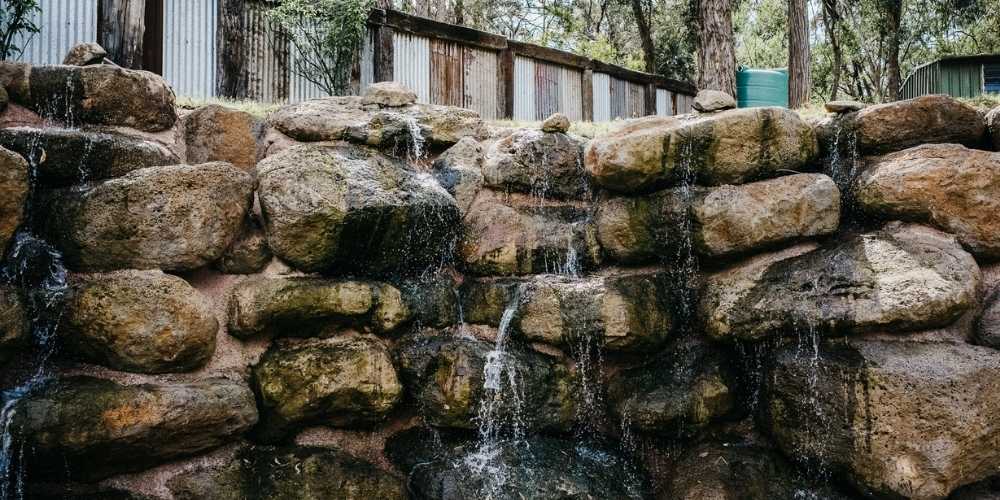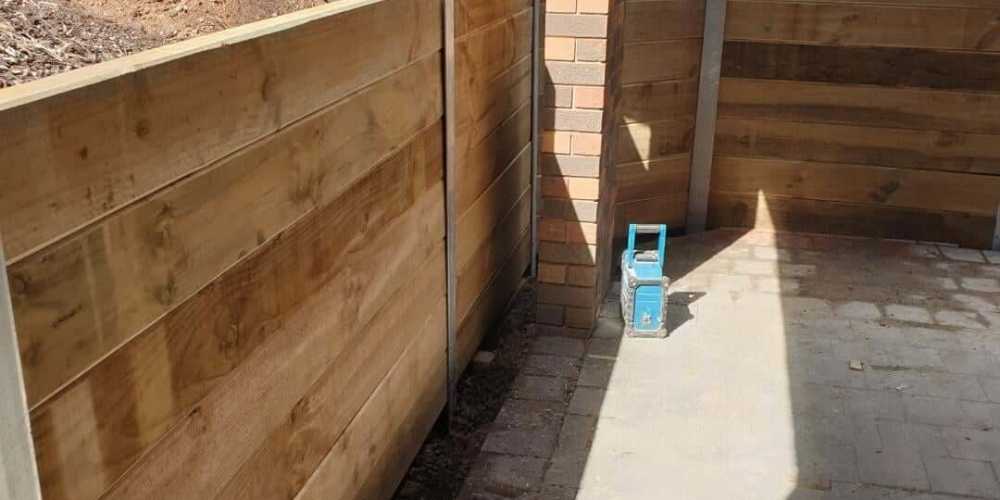Retaining Wall - A Quick Overview
In places where more support is required to stop the earth from sliding down due to erosion, retaining walls are frequently encountered. A retaining wall’s primary purpose is to resist gravity; the slope’s lateral force must be countered in the construction of the retaining wall.
Let us give you a quick overview of everything about retaining walls, what really they are, their purpose and understand if you need one for your home or not.
What is a Retaining Wall?
A retaining wall is designed to withstand soil lateral pressure or contain soil elements. Behind the retaining wall structure, earth filling, liquid force, sand, and other granular materials may also contribute to the lateral pressure. Retaining wall structures come in many forms and serve a variety of functions.
Retaining walls are comparatively stiff structures designed to hold soil in place so that it can be held at various depths on both sides. It also holds soil to slopes that it would not naturally follow (typically a steep, near-vertical or vertical slope). They are frequently utilised in terrain with unfavourable slopes or regions where the environment needs to be drastically changed and constructed for more specialized purposes, including hillside farming or traffic overpasses. A seawall or bulkhead is a retaining wall that retains soil on the backside and water on the front.
Table of Contents

What is a Retaining Wall Used For?
The main purpose of retaining walls is to control the soil on sloped sites. When there is significant rainfall or not enough trees or other vegetation to hold the ground, they act as a barrier to stop soil from shifting or sliding downslope.
Here are other purposes of retaining walls:
Managing the soil
The main goal of retaining walls is to control the soil on sloped sites. When excessive rain or insufficient trees or vegetation to hold the ground in place, they act as a barrier to stop soil from shifting or sliding downslope. This is a successful method of preventing erosion and lowering stormwater flow because it receives its fair share of rain.
Lighting
Retaining walls provide a simple and attractive way to incorporate low-voltage lighting into more elaborate outdoor living areas without the additional clutter of light poles. They also offer a way to connect utility lines to the farthest reaches of the patio or pool deck. Lighting should be installed at knee height or below to illuminate pathways, steps, and patios properly and without glare. At eye level, sconces provide lovely lighting that highlights the wall’s texture.
Boost Drainage
Water flow in specific regions can also be controlled using retaining walls. This is particularly beneficial when a slope is close to a body of water. However, remember that numerous state and local laws must be followed while constructing a wall for this use. As a result, it’s crucial to investigate before creating one.
Avoid Erosion
As previously mentioned, a retaining wall’s ability to hold back soil is one of its primary functions. The location could readily experience erosion if the earth slopes downward. Water can be kept back by retaining walls. Without a wall serving this purpose, the shoreline may be vulnerable to erosion, which could cause the sea line to move. Laws about permits must be considered when constructing a retaining wall to stop erosion.
Most Common Types of Retaining Wall
There are different reasons why retaining walls are so common in residential and business landscaping. They allow you to add stunning hardscaping and stonework to the area and let you redesign your landscape around focal points (using flowerbeds and gardens). One of their most important uses is their capacity to preserve a yard by preventing soil erosion and controlling rainwater flow. The four most popular retaining wall types and their applications and labour requirements are shown below:
Gravity Retaining Wall
The simplest type of retaining wall, a gravity wall, relies solely on its weight and mass to keep the soil at bay. These retaining walls support the most extensive range of materials because they depend on weight. Several possibilities include dry-stacked stone, pavers, and unmortared stone. Shorter walls don’t need additional reinforcing, but most will need at least a small trench dug, and some could need a concrete footer to support them.
Gravity retaining walls often have slanted faces and a more extensive base to withstand more significant lateral earth pressures at depth. This implies that while they are simple to construct and appropriate for retaining heights of up to about 3 meters or higher, they tend to occupy too much space and become too heavy for the ground below, which can result in bearing capacity failure. This might prevent the wall from holding soil against it.
Cantilevered Retaining Wall
Leverage principles are used to build cantilever retaining walls, which are typically made of reinforced concrete. Its stem is substantially thinner, and most of its resistance to sliding and overturning comes from the weight of the backfill dirt. The most typical style of earth-retaining structure is the cantilever retaining wall. From roughly the 1920s until the 1970s, reinforced Portland-cement concrete (PCC) rigid retaining walls were the most commonly used. Two different ground surface elevations are maintained by using earth slopes and earthen retaining structures.
Compared to other retaining wall styles, cantilever walls have the benefit of taking up less space once constructed and being appropriate for retained heights up to 5m. They are not particularly well suited to keeping existing slopes, though, unless temporary support is supplied. At the same time, the building takes place, requiring room behind the wall.
Embedded retaining walls
An embedded retaining wall typically consists of interlocking pile pieces set into suitable ground that either carry the weight of the material being kept or provide extra support in tie rods and related anchorage systems. When designing new structures for ports, civil engineers have various building methods and materials at their disposal. Steel piling is frequently regarded as the best option when looking for an embedded retaining wall solution due to features including strength, rapid construction, and appropriateness for installation over water compared to other solutions.
Reinforced soil retaining walls
Geogrids and various facing options are used in reinforced soil retaining wall systems to maintain a sloping soil mass (typically concrete blocks or wire mesh). This enables quick and cost-effective construction by shortening typical construction durations, removing the need for specialized expertise, and frequently allowing the use of site-won fill materials.
This retaining wall incorporates geogrid layers to strengthen the soil and increase its carrying capacity and resistance to differential settlement.
Wall vs Retaining Wall - How Do They Differ?
The primary distinction between retaining and regular walls is how they are built and used. Standard walls, such as those in your house, are made of treated wood and strengthen their framework. Brick or stone retaining walls are an exterior barrier for landscaping and drainage.
In the case of tiny dwellings, a typical wall is one that distributes weight to the foundations; in contrast, partition walls are merely intended to serve as dividers and do not transport or transfer any weight. Retaining walls, on the other hand, work to keep the soil behind them from pressing down on the wall from the side.

Pros and Cons of a Retaining Wall
Pros:
- They stop soil erosion and spillover into your yard.
- Flooding in your yard is prevented by retaining walls.
- These walls protect nearby structures from factors that could harm them.
- In a beautifully planted yard, they make lovely decorative elements.
- Due to erosion, retaining walls lessen the amount of maintenance that many homes must deal with.
- Retaining walls are a practical device that guards against sinkholes damaging your landscape design.
- Retaining walls also offer an appealing appearance to your garden.
Cons:
- Your retaining wall needs regular upkeep and repair (well-constructed walls need very little maintenance)
- Due to intense pressure or significant temperature changes, concrete retaining walls develop vertical fissures.
- When made of wood, retaining walls are prone to luring termites into your home.
- When excessive soil pressure is applied to some retaining walls, including brick walls, the result is frequently brick breakage or foundation failure.
Do You Need a Retaining Wall?
Here are a few queries to ask yourself to decide if you require the installation of a retaining wall.
- Is there a problem with dirt erosion in your yard? To function as a barrier to the soil, you should have a retaining wall erected if dirt is overflowing into your yard.
- Is your house close to a fault line in the soil? Even if this isn’t a problem, having a retaining wall will provide peace of mind in case of abrupt erosion, which an earthquake could bring on.
- Do you have issues with drainage in your yard? Retaining wall construction will solve drainage problems.
- Are you seeking a landscape addition that is low maintenance, helpful, and lovely? Retaining walls are an easy, low-maintenance option to improve the look of your outdoor space.
Key Takeaway
Landowners can use retaining walls as landscaping solutions to deal with sloped terrain. They frequently have a practical purpose in addition to being aesthetically pleasing. Homeowners commonly use retaining walls to expand the amount of usable space in their yards. Civil engineers use them to build functional highways. Even the environment can benefit from retaining walls, preventing flooding and reducing erosion. Retaining walls can add extra room for your backyard barbecues or safeguard roads and buildings by providing a quick remedy for a steep slope or sagging hillside.
